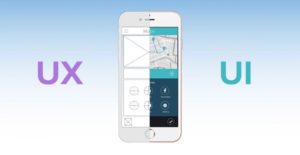
Design: Why Your Mobile App Is Nothing Without It.
Full disclosure; I am a software developer. My understanding and perception of what makes a good user experience is far from that of a designers. However, as much as I care about writing and executing clean, precise code in an application, design is continually becoming far more critical to me. Let’s set the scene, you’re building an app. For whatever reason, be it lack of funds or a short timeframe you find yourself weighing up whether or not you should invest that time and money into designs. Maybe you think you don’t need a fantastic design for the first version, just get it out into the app stores and re-design once it picks up momentum. This is a very dangerous approach, here’s why.
Building a mobile app can be a fantastic experience, both for the client and the people creating it. Seeing your idea come to life is an experience like no other. Too many times though, I hear clients say that design is not essential for the first version. It kills me to either have to battle with the client to express the importance of design, or go along with their wishes already knowing the grim reality of the future of their app.
Designs for a mobile app are built with two things in mind; the user interface (UI) and user experience (UX). UI and UX overlap to create beautiful designs, therefore it’s hard to pinpoint the importance of which one is more prominent in the creation of effective designs. To put it simply, the user interface is colour schemes, fonts, images and any other aesthetic element. While the user experience is exactly that, mapping out the experience the user has navigating through the app from the outset and throughout.
The appearance of your app is the first thing your user comes in contact with, their first interaction with you. If you know anything about good business, you’d know that first impressions count a lot. Your mobile app is an extension of yourself; it’s part of your image and reflects your brand identity. With this in mind think very carefully about how important design is to you now. Do you really want users associating your business/company with a negative appearance? First impressions are hard to change, after all.
Although aesthetics are important for making a first impression, good design for a mobile app is a lot more than a good appearance. How an app looks means nothing if you haven’t created a great user experience. Considering the functionality and effectiveness of navigation is vital to an apps success. People form emotional connections with the objects they interact with. Because of this you need to respect users time. Confusing navigation can wind up frustrating the user. This can result in the un-installing of your app, which is very bad news for you.
“Design is not just what it looks like and feels like. Design is how it works.” – Steve Jobs
This translates to any enterprise app. Time and time again when building apps for internal business use, I hear the phrase “Only our employees will be using it, design will not be needed.” I try and steer clients away from this ideology, as I already stated design is not just appearance. Think about it this way. Do you want your employees to be as efficient and quick as possible at their job? Giving them a confusing app that’s hard to navigate through is going to do the complete opposite. While having a pretty interface isn’t essential, designing elements so they’re easy to identify and use is critical.
Excellent app development is lead by a good UI/UX designer and then supported by developers. Both designers and developers are striving for the same goal; improve people lives. It’s essential to always have a plan before designing the interface or writing the code. Design should pave the way for developers, with developers having to communicate with the designers so they know where the path is even possible of going. Failure to do so leads to creating applications that are confusing and essentially pointless for the user. Alternatively, it results in the client having to fork out for a re-design the user is going to respond positively to. Meaning you’ve either wasted your money and resources, or you’ve created an app that’s going to sit idle in the app store. Almost seems easier to just go with amazing designs from the get-go, doesn’t it?


